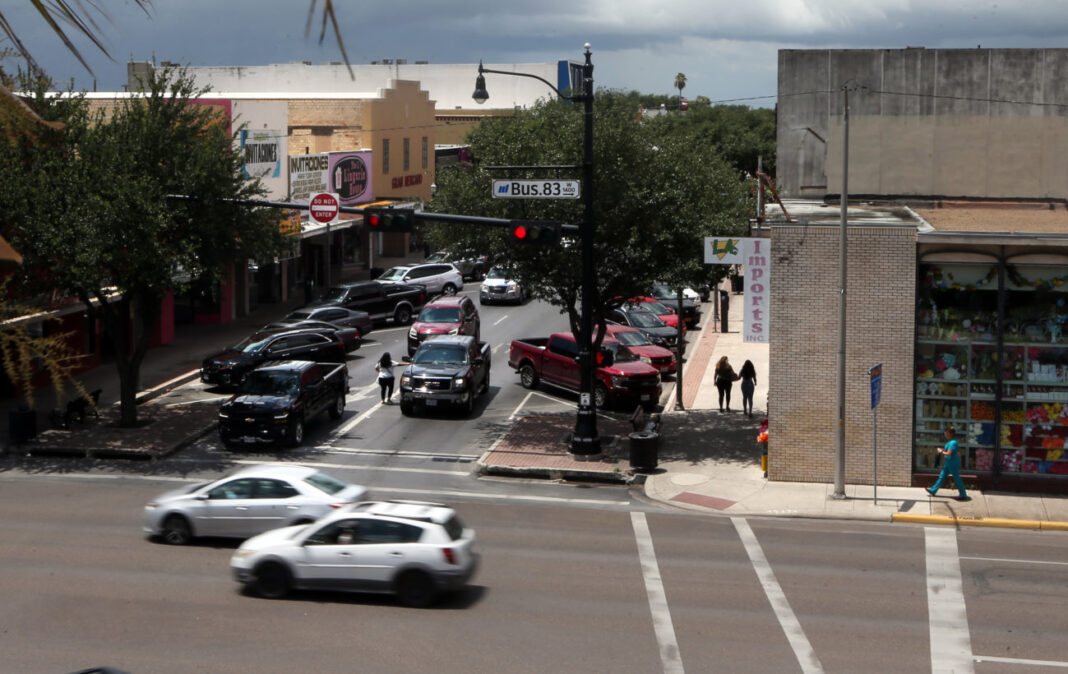|
Only have a minute? Listen instead
Getting your Trinity Audio player ready...
|
Obtaining an accurate picture of what homelessness looks like in the Rio Grande Valley is key to getting much needed, but extremely limited, federal assistance dollars.
And part of the way officials in McAllen, which is one of only two governmental entities in the Upper Valley entitled to receive those federal funds, help paint that picture is by conducting an annual homelessness survey.
“We’re what the federal government calls a grantee entitlement community. These funds are coming from the U.S. Department of Housing and Urban Development,” Julia Lash, grant administrator for the city of McAllen, said.
HUD offers money to abate and prevent homelessness through a variety of funding programs — programs that are administered by the state.
One of those programs is called the Emergency Solutions Grant, which is the one that’s tailored to provide homelessness assistance services. For this one, we are federally mandated to conduct an annual count for homeless individuals,” Lash said.
The count is called a “point in time” or “PIT” survey. It takes place annually on the fourth Thursday of January.
Staff and volunteers fan out throughout the city and the county to places where unhoused people have been known to gather, Steven de la Garza, division manager of the Hidalgo County Urban County Program, said.
Some 40-50 volunteers conduct the county’s survey, and not just of those on the streets, but also from transient populations living in area hotels and shelters, such as the Salvation Army, Catholic Charities of the Rio Grande Valley and Mujeres Unidas.
The PIT survey attempts to gather information from both sheltered and unsheltered people, Lash said.
The surveys are incredibly comprehensive. Individuals are asked biographical questions, such as their age, gender and race, as well as how long they have been unhoused.

But surveyors also ask questions that Lash characterized as “intrusive” — questions about mental health diagnoses, communicable diseases, such as HIV, and more.
Understandably, such deeply personal questions may make people unwilling to cooperate with surveyors.
“The hardest part is you’re approaching somebody that is already experiencing some sort of crisis in their life. Whatever the reason may have been that they became homeless, they’re already experiencing crisis, so they’re already sensitive,” Lash said.
To help offset that hesitation, surveyors offer interviewees incentive bags filled with essentials, such as food, toiletries and even pet food.
“We give them these bags first. Once we establish this relationship … they start to open up freely and start answering your questions,” Lash said.
“They do feel unheard, unwanted. We make it a point to sit at their level and talk to them as if they’re human, because they are,” she added a moment later.
After conducting the survey, McAllen and the county submit their data to the Texas Homeless Network, which collates and distills survey data from across the state in a report called the Homeless Assessment Report.
In turn, Congress uses the report to guide its decision making when deciding on aid appropriations at the end of the year.
But before the report heads to Washington, D.C., the state sends the findings back to the communities that conducted the surveys.
It’s too early to draw conclusions about the 2024 PIT survey — McAllen and Hidalgo County won’t get the results back until March or April. However, Lash said homelessness trends have changed in recent years.
Officials are seeing an uptick in the number of people becoming homeless, as well as a rise in those finding themselves at risk and seeking help.
Lash attributes those upticks to the COVID-19 pandemic and post-pandemic inflation.
“COVID played a big impact on the increase of homelessness right now, because with the cost of living increase that is currently in the market, we have people that were living … at a fixed rate (income), say like Social Security benefits, and then the rents increased and they can no longer pay for their rent,” Lash said.
Further, the federal funding pots are extremely limited. McAllen’s allocation is just $148,000, while Hidalgo County’s is about $660,000, de la Garza said.
Much of that money goes toward established nonprofits or assistance programs, which use the money to pay for shelter operations, as well as food and transportation programs.
And organizations that receive funding must match it dollar for dollar, Lash said.
To her, the funding is not enough to meet current needs, especially when it comes with such strings attached.
De la Garza agreed, saying, “Absolutely not,” when asked if there’s enough funding to spread around.
Lash said she hopes HUD will one day consider eliminating that match requirement “so that nonprofits don’t think twice to apply for our funding,” she said.





